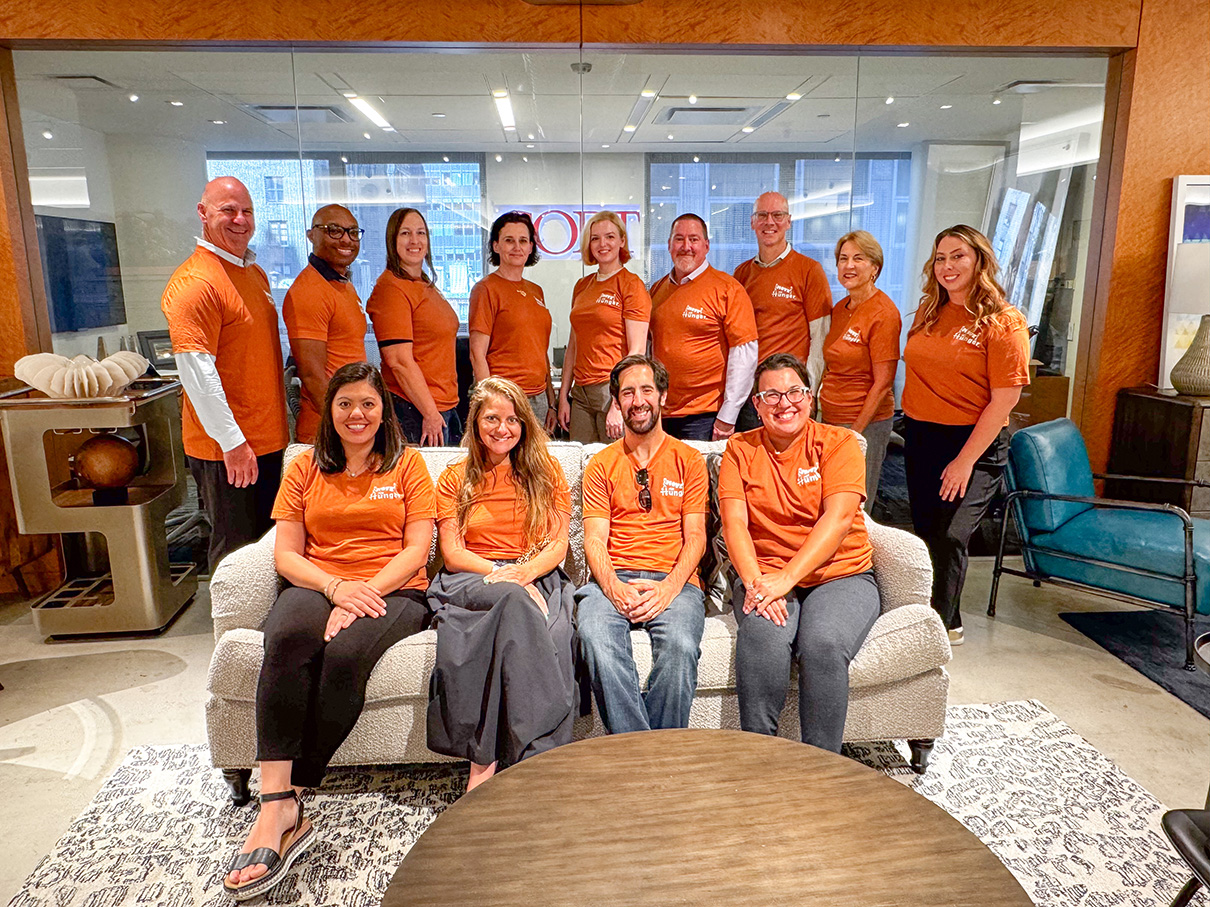The talent relocation industry faces unique sustainability challenges. Consider the work that goes into a move, big and small—from the trucks and freight that ship goods, all the way to a transferee cleaning out their fridge before moving out. It all adds up.
This is what Adam Lowy realized after years of working for his family’s moving company in New Jersey. Move after move, he witnessed plenty of food waste—so much so that it drove him to action.
In 2009, Lowy founded Move For Hunger, an organization dedicated to fighting hunger and helping the talent mobility industry find sustainable ways to reduce food waste. The nonprofit organization partners with relocation companies and transportation networks to donate food from moves—that would otherwise go to waste—to food banks across North America.
Below, we talk to Lowy about the ways Move For Hunger is leading the charge in making relocation efforts more sustainable.
What challenges does the talent relocation industry face when it comes to sustainability? Where did you see a need or gap to bridge?
Relocation is an industry that has historically been plagued with waste and pollution. From wasted food, clothing, and furniture, to single-use packaging materials, and carbon emissions from multiple modes of transportation, it takes a lot of resources to relocate someone.
These challenges, however, present opportunities. What we can do is leverage the resources that exist today—like Move For Hunger and Home Sweet Home—to reduce waste during relocation. We can also invest in new solutions that help the industry become more sustainable, such as electrifying moving fleets and adding solar to the hundreds of thousands of square feet of warehouses.
What kind of community response have you seen with the work Move For Hunger is doing? What feedback from the talent relocation industry have you received?
The relocation industry has been nothing short of amazing in its support of Move For Hunger. In the U.S. alone, 38% of the food produced ends up in landfills, while one in eight Americans struggle with hunger. Many of the nation’s leading relocation management companies (RMCs), van lines, household goods suppliers, and third-party companies have been supporting our work for many years. Whether it’s helping us recover food, adding Move For Hunger into relocation policies, volunteering for committees, or fundraising for the cause, the relocation industry is definitely our most active group of supporters—hands down!


Move For Hunger was established in 2009. The team is pictured above at a recent company board meeting.
What does collaboration with partners in the talent relocation industry look like? Any anecdotes or case studies to share?
Many companies will add Move For Hunger to their employee relocation policies. By doing so, it makes it easy for their team members to donate their food when they move. There’s no cost to the company or employee, and we’re able to deliver to food banks and pantries across the U.S. and Canada.
We’ve also worked closely with many of the regional relocation councils to organize fundraisers and events. Our Bay Area Truck Pull has become a staple in San Francisco, and we’re excited to bring it to life again this fall. This year, we’re teaming up with WERC to add some impact to GWS (22-25 October). The first 800 people to pick up their badges will be invited to pack a meal for a family in need. The event, generously supported by Atlas Van Lines and The Paxton Companies, will help us provide 3,200 meals to individuals. We hope to see you at registration!
How do you measure the impact of your efforts? What has success looked like lately?
We love data! Every time Move For Hunger delivers food to a food bank, we are provided with a weight receipt. From there, we can track how many food recoveries we’ve created, how many meals it provides, how many greenhouse gas emissions we’ve reduced, and how much our network continues to grow.
This year marks Move For Hunger’s 15th anniversary, and we are proud to share that we have delivered more than 42 million meals to families in need. Lately, our work has gone far beyond relocation, as we launch new programs to recover food from farms, distributors, and consumer packaged goods (CPG) companies—sometimes entire trailer loads at a time.
If we were able to recover just half of the food wasted in this country each year, we’d be able to provide every hungry American three meals a day, every day. There is still much work to be done!
What do the next five to 10 years look like for Move For Hunger? What goals do you have?
As much as our organization has grown, in many ways we are just beginning to find our groove. We’ve been focusing on growing our network of participating freight and logistics companies to allow us to recover more fresh food for families in need. Additionally, we are working even more closely with industry partners like WERC and the regional associations to see how we can further drive local impact in the communities this industry serves.
It took us 15 years to deliver 40 million meals, but this year we hope to feed 13 million people in a single year. At Move For Hunger, we are working hard to meet the growing need and ensure everyone has enough to eat.
What makes you hopeful for the future of this industry?
I’ve been fortunate enough to spend a lot of time with this industry for well over a decade. What I can say is that it is an industry filled with people who care. They actually care—a whole heck of a lot—about the industry, about community, about doing the right thing for the planet. And while it’s a very challenging time for what is already a very complicated industry, I am hopeful to hear panels at industry events about how we can become greener and see changes already being put into action. The logistics of relocating people across the world are hard, and change will take time. But it’s happening, and it’s exciting!
If you’d like to get your company involved or support Move For Hunger’s efforts, please visit moveforhunger.org.